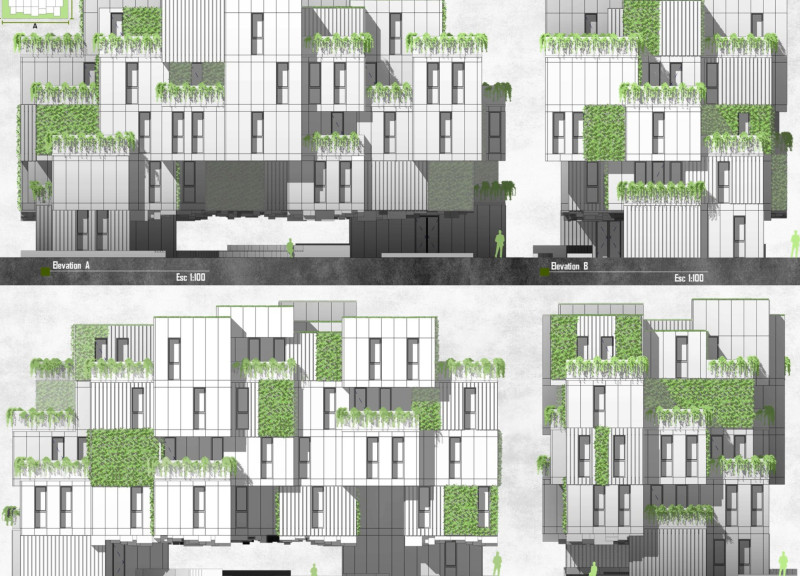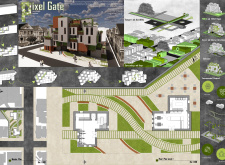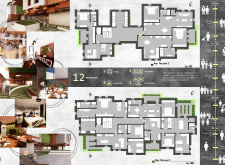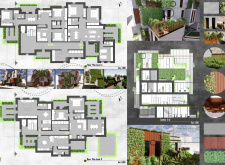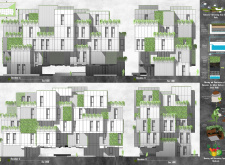5 key facts about this project
The architectural design showcases interlocking volumes that create a pixelated effect, symbolizing modernity and innovation. This modular approach not only enhances the aesthetic appeal but also allows for flexible configurations, thereby accommodating various demographics. The strategic planning of the building layout emphasizes access to natural light, with extensive glass elements that connect indoor and outdoor spaces. Ground-level areas are designated for commercial purposes, further encouraging community interaction and economic vitality.
Sustainable attributes are a core focus of the design, incorporating features such as rainwater harvesting systems and green roofing. These elements aim to minimize environmental impact while enhancing daily living conditions for occupants. The use of materials such as reinforced concrete, metal panels, wood cladding, and glass demonstrates a commitment to durability and aesthetic coherence, promoting energy efficiency and low maintenance over time.
Designing for Community Interaction
One defining characteristic of Pixel Gate is its emphasis on community integration. The design intentionally blurs the boundaries between private and public spaces, promoting engagement among residents. Ground-floor commercial spaces serve as hubs for interaction, while the arrangement of residential units encourages neighborly connections. The inclusion of outdoor terraces and communal gardens further enhances this sense of community, providing spaces for residents to socialize and participate in shared activities.
In addition, the building features strategically placed green spaces that not only enhance the visual landscape but also contribute to residents’ well-being. These natural elements foster sustainability and biodiversity within the urban fabric, ensuring that nature is an integral part of the living environment.
Innovative Sustainability Features
The sustainability features of Pixel Gate underscore the project’s commitment to environmentally responsible design. The green roofing system contributes to energy efficiency by improving insulation and managing stormwater, while also enhancing the overall landscape aesthetic. The application of rainwater harvesting maximizes water conservation, providing resources for irrigation and reducing reliance on municipal systems.
The chosen materials reflect sustainable practices, promoting longevity and minimal environmental impact. The combination of reinforced concrete for structural integrity, wood cladding for warmth, and metal panels for modern accents showcases a balanced approach to materiality. This thoughtful selection supports not only the functional requirements of the building but also contributes to a cohesive design narrative.
For a comprehensive understanding of Pixel Gate, readers are encouraged to explore the project presentation further. Delve into architectural plans, architectural sections, architectural details, and architectural ideas that underpin this design. Each aspect reveals the meticulous approach taken to create a living space that is both functional and harmonious within its urban environment.


